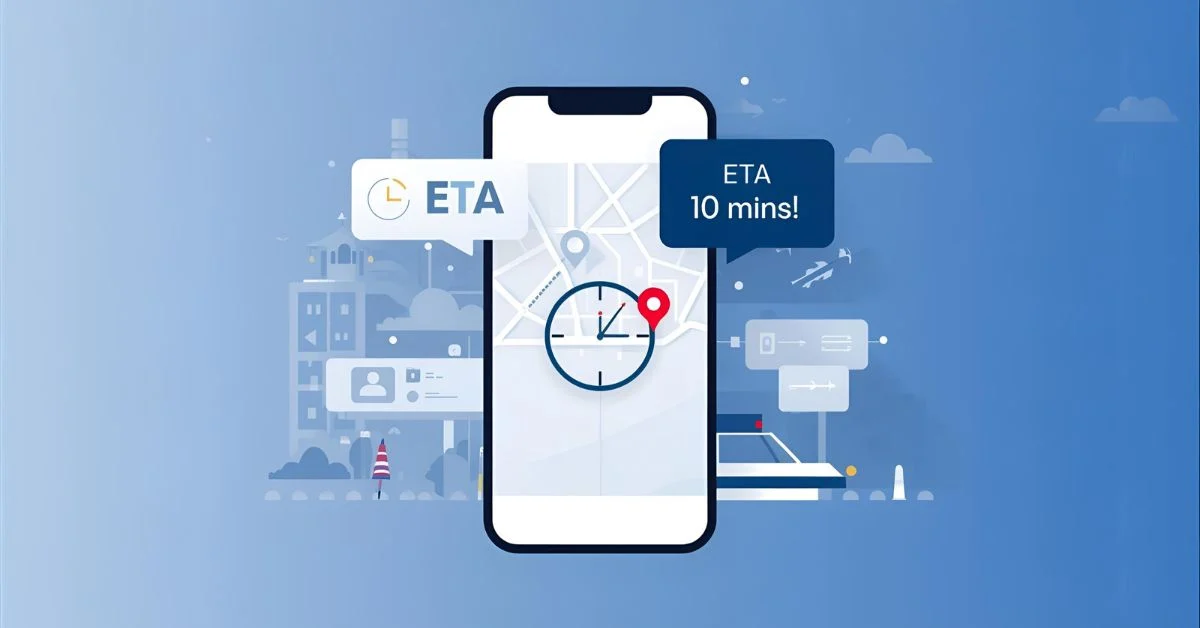You’re waiting for your ride, and a message pops up:
“On my way — ETA 10 mins!” 🚗💨
Simple, right? But what exactly does ETA stand for?
In today’s fast-moving world, “ETA” has become a go-to abbreviation used in texting, emails, and apps like Google Maps or Uber.
If you’re tracking a flight, waiting for food delivery, or planning a meeting, ETA helps set expectations with clarity and precision.
Let’s unpack its meaning, background, and how you can use it like a pro in everyday and professional conversations.
📖 Definition & Meaning

ETA stands for Estimated Time of Arrival.
It refers to the predicted time someone or something will reach a destination. It’s not an exact timestamp — it’s an estimate based on distance, traffic, or task progress.
Examples:
- “What’s your ETA?” → “I’ll be there by 6:30 PM.”
- “Courier ETA: 2 hours.”
- “Our team’s ETA for completing the update is Friday.”
So, whether it’s a flight, a text, or a project, ETA gives a quick time expectation — no long explanations needed.
🕰️ Background & History

The abbreviation ETA originated in the aviation and military sectors in the early 20th century. Pilots and commanders used it to estimate arrival times for missions or aircraft.
As communication evolved, “ETA” spread into:
- Transportation & logistics – For shipping and delivery tracking
- Technology & apps – For navigation and ride-sharing
- Everyday texting – To simplify coordination
Today, ETA is a universal term — recognized across industries and languages.
💬 Usage in Various Contexts

| Context | Example | Meaning |
|---|---|---|
| Travel & Transport | “ETA to Karachi is 4:45 PM.” | Expected arrival of a flight or vehicle. |
| Texting & Chatting | “ETA 15 mins!” | Quick way to say, “I’ll reach in 15 minutes.” |
| Workplace Communication | “What’s the ETA on that report?” | Asking when a task or project will be completed. |
| Delivery & Logistics | “Your package ETA: Thursday 3 PM.” | The expected delivery time or date. |
It’s short, professional, and widely understood — making it ideal for both casual and formal settings.
🚫 Common Misconceptions
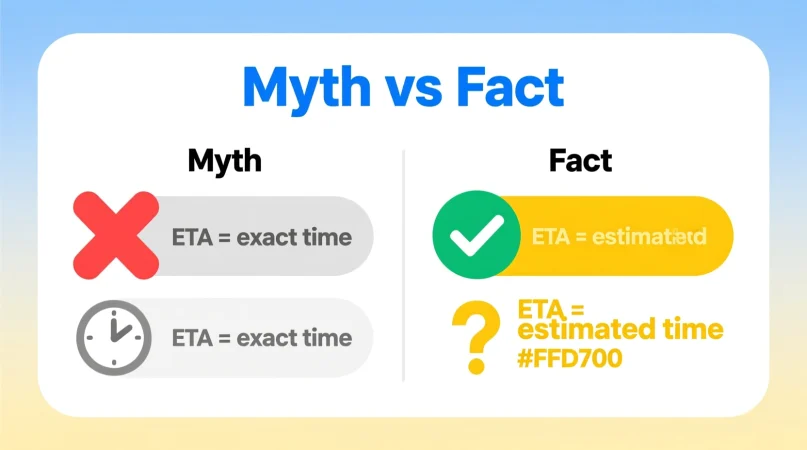
- ETA isn’t exact — it’s a prediction, not a guaranteed time.
- Not just for travel — also used for projects, digital uploads, or file transfers.
- Different from ETD — ETD means Estimated Time of Departure, while ETA refers to arrival.
🔁 Similar Terms & Alternatives
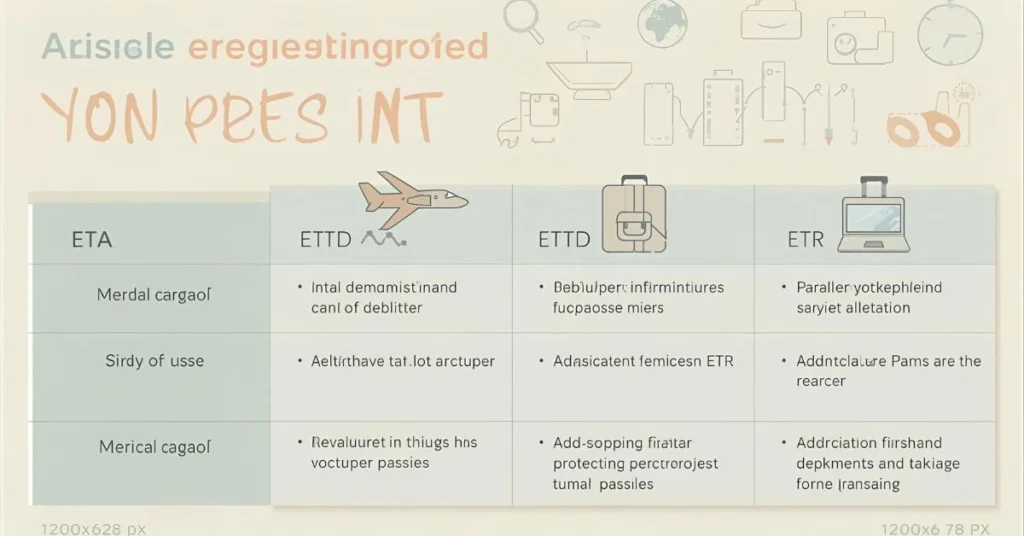
| Abbreviation | Meaning | Used For |
|---|---|---|
| ETD | Estimated Time of Departure | When something leaves |
| ETR | Estimated Time of Return | When someone/something will come back |
| ETC | Estimated Time of Completion | When a task or project will be finished |
These are often used interchangeably in logistics, travel, and workplace communications.
💡 How to Respond to ETA
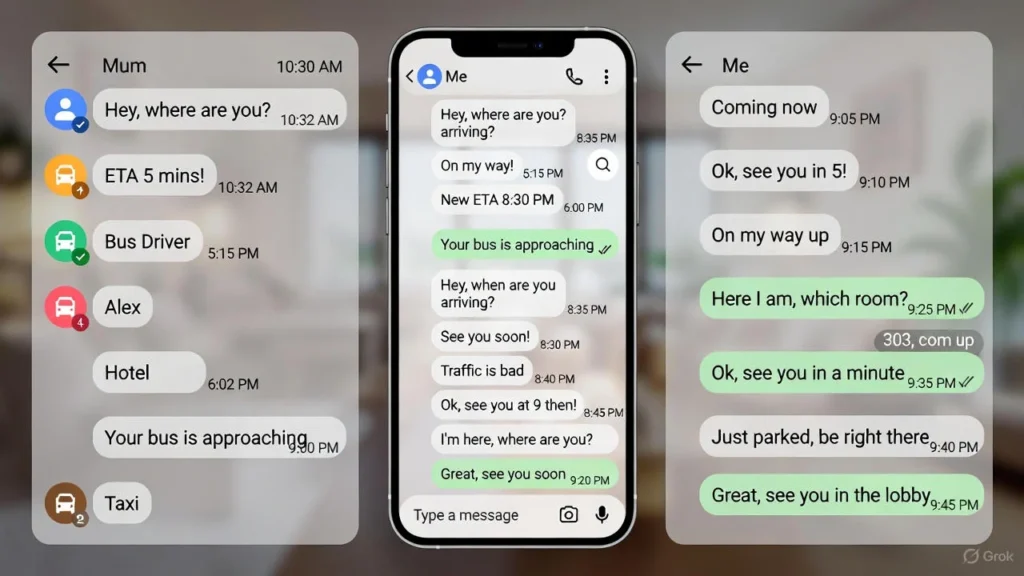
When someone asks your ETA, give an approximate time based on your situation:
Casual:
- “ETA 5 mins!”
- “Be there by 8 PM.”
Professional:
- “ETA for report submission: Monday afternoon.”
- “System update ETA: 2 hours.”
If your timing changes, always update the other person:
“Traffic’s heavy — new ETA 7:45 PM.”
🌍 Regional & Cultural Differences

While “ETA” is an English abbreviation, it’s globally understood — especially in business, transport, and travel apps.
Some regions may prefer full phrases like “Expected Arrival Time,” but in digital communication, “ETA” remains universal.
💻 Usage in Online Communities & Apps
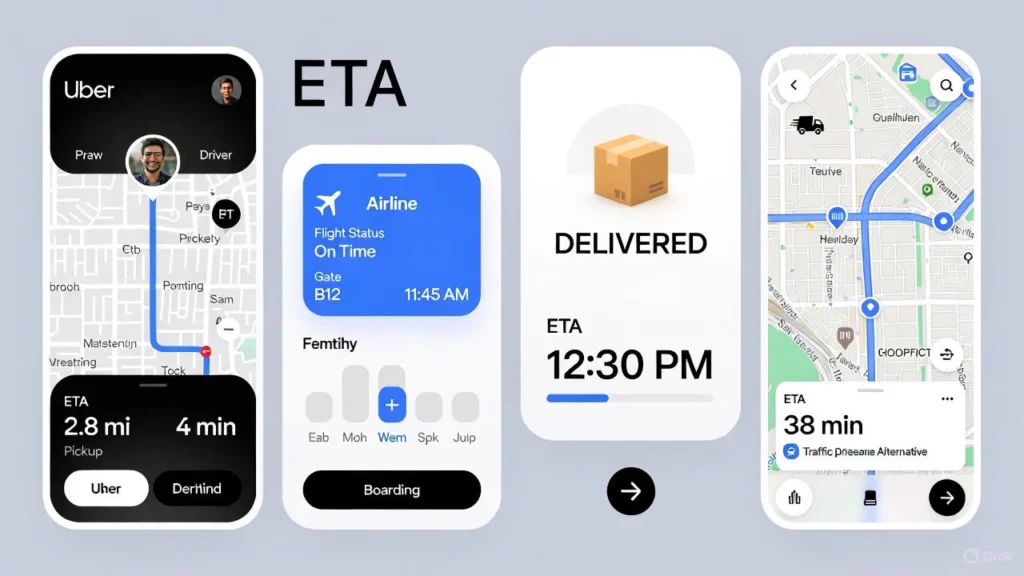
ETA appears frequently across platforms:
- Navigation apps (Google Maps, Waze): “ETA: 10:25 AM.”
- Ride-sharing apps (Uber, Bolt): Driver’s arrival estimate.
- Delivery services: “Your order ETA: 20 mins.”
- Gaming chats: “ETA to next mission: 2 mins.”
- Work tools (Slack, Teams, Email): “ETA for update?”
This abbreviation saves time while keeping communication professional and efficient.
⚠️ Hidden or Alternative Meanings
While “ETA” mainly stands for Estimated Time of Arrival, in specific historical contexts, it can also refer to:
- Euskadi Ta Askatasuna (ETA) — a former Basque separatist group in Spain.
However, in modern communication, “ETA” almost always refers to arrival or completion time, not the organization.
🏢 Suitability for Professional Communication

✅ Yes, ETA is perfectly suitable for work and formal emails.
Using ETA shows you’re clear, concise, and time-conscious — qualities appreciated in professional settings.
Examples:
- “Team ETA for completion: Tuesday 5 PM.”
- “Server maintenance ETA: 3 hours.”
For project management, “ETA” is preferred over full sentences like ‘We’ll probably finish by…’ because it’s precise and universally recognized.
❓ FAQs
Q1: What does ETA mean in text messages?
A: It means Estimated Time of Arrival — when someone or something is expected to arrive.
Q2: Is ETA formal or slang?
A: It’s both — casual in texting but fully acceptable in professional use.
Q3: What’s the difference between ETA and ETD?
A: ETA = arrival time; ETD = departure time.
Q4: Can I use ETA in emails?
A: Absolutely. It’s standard in business communication and logistics.
Q5: What if my ETA changes?
A: Just update it: “New ETA: 9:15 PM.”
Q6: Does ETA apply to non-travel tasks?
A: Yes — it’s often used for project deadlines or task completion.
Q7: How do apps calculate ETA?
A: Using distance, speed, and real-time traffic data.
🏁 Conclusion
In short, ETA (Estimated Time of Arrival) is a quick, universal way to communicate when something or someone will arrive — from flights and deliveries to reports and text messages.
If you’re chatting with friends or sending a corporate update, using ETA keeps things short, clear, and professional.
Next time someone asks for your ETA — you’ll not only know what it means but how to use it perfectly. ⏳

